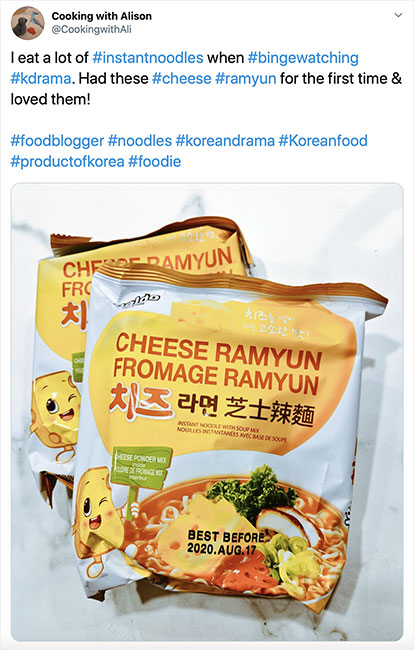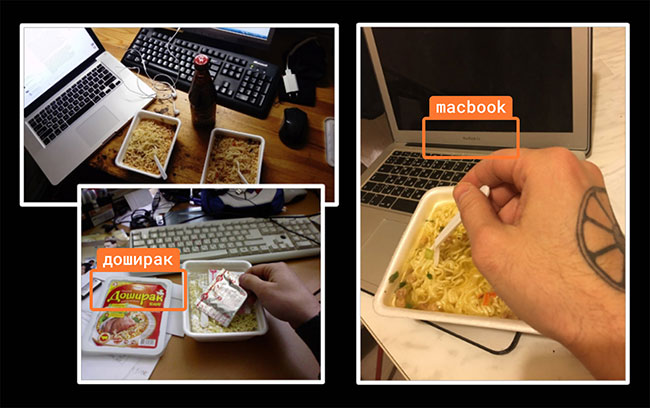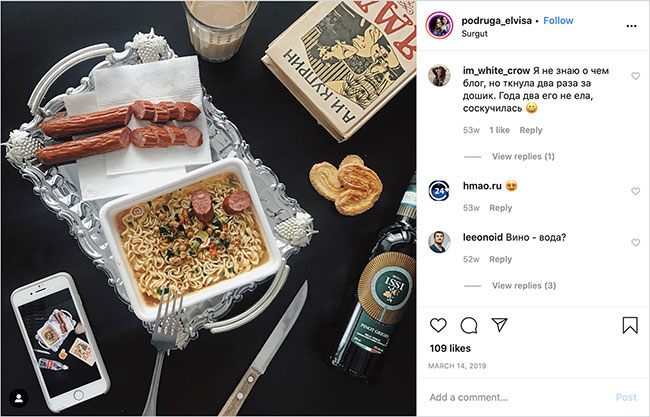Slices of life
Editor's note: Tetiana Kutsa is chief marketing officer at YouScan, a developer of social media monitoring and analytics tools.

Market research is essential in finding and understanding competitors, customers and market niches. Once a company has information about consumers’ needs, complaints and expectations, it can tailor its products and services to be more competitive in the market, increase ROI and win customer loyalty.
Beyond data gathered from traditional research, social media is an inexhaustible source of consumer insights, where people talk about various aspects of their online and offline life, share their opinions and experiences and complain and praise products or services. This article will use an example of instant ramen to explore how social media intelligence tools can help brands explore product usage and uncover potential innovations and marketing breakthroughs.
In our view, there are five reasons why social media intelligence improves market research.
 1. Absence of the “interviewer effect”
1. Absence of the “interviewer effect”
Social media intelligence software can help avoid the influence of the interviewer on the data. Users post visual and textual context based on their feelings and emotions, triggered by a particular situation, offering abundant customer insights that could uncover many opportunities for further research.
2. The volume and data reachability
Social media intelligence software collects and analyzes millions of data points from thousands of sources daily. Thanks to the rising internet penetration into our lives (it has almost tripled for the last 10 years) researchers can monitor the activity of various socioeconomic groups in the social media landscape according to their interests, income, etc.
3. Retrospective data
Historical data is kept in the system even if users delete it, which allows researchers to find the original sources.
4. Verification of conventional research methods
Social media data allows you to not only form hypotheses but also to supplement the conventional analytical results with additional data.
 5. Visual analytics
5. Visual analytics
Simple text monitoring isn’t enough. Social media intelligence solutions that incorporate visual insights can be used to detect previously unknown customers and product usages which might go undetected with traditional tools.
Visual analytics is a feature of social media intelligence software for monitoring pictures. While social monitoring tools analyze text mentions, visual insights (VI) work with images. The system collects the images that are related to the topic and analyzes their context. A word cloud illustrates numerous insights such as people (women, men, toddlers, etc. ), action – what they’re doing (eating, standing, selling), the scene – in what setting (city, supermarket, a park, etc.) and with which object (computer, noodles, an appliance, etc.) they are interacting. These insights shed light into why people buy or ignore a brand or a particular product.
In addition, apart from detecting objects, scenes, colors, people and action, VI also recognizes brand logos. Logo recognition can boost marketing research and analysis by providing visual information about the customers’ preferences – even if they didn’t type a single word about a brand in their social media post. The ability to identify logos from pictures, in the absence of any accompanying text, opens a world of possibilities for the analysis of consumer-brand interactions.

Instant-noodle case study
In order to conduct research on instant noodles, social media mentions and user photos were collected. The search query included two keywords: “noodles” and “instant noodles.” Afterward, machine learning algorithms were applied to analyze user messages to understand what they said about the noodles.
With the help of AI-powered social media intelligence software and image recognition tools, research was conducted in order to identify a typical consumer of instant noodles, including their interests and consumption moments.
Two million word-of-mouth mentions in total, and roughly the same number of images, were analyzed, including brand mentions on social networks, forums, blogs, review sites, online media. The research period was January 2, 2020 to March 2, 2020. The data was gathered worldwide in English and Russian. We employed spam deletion, dataset sampling, sentiment and content analysis, visual content breakdown and Twitter-followed pages exploration.
AI-powered visual analytics detected three target audiences: students (young people under the age of 20), e-sports athletes, and women on a diet (20-50 years old). The research gathered their perceptions, attitudes towards the product and expectations of how the noodles can be consumed and improved. Moreover, it discovered popular trends and uncovered opportunities for new product launches.
Apart from the gender of people depicted in social media images, visual insights helped to detect more accurate customer personas by identifying age and occupation. Once the system collected a sufficient amount of user-generated content – including customers’ posts, reviews, photos and screenshots from social media – the researchers looked deeper into the data and revealed the following information.

Students and young people under the age of 20. When we analyzed the mentions and students’ photos, we found that for every second student, instant noodles are lunch, while for every tenth student it’s a staple diet. For the majority of students (92%) noodles are a quick, cheap and nourishing meal. For some (24%) it’s a dry snack, a hangover remedy and a way to escape routine. Most young girls (47%) enjoy the noodles as a guilty pleasure and a cheat meal.
AI-powered filters were applied to see if there were any insights that can help researchers understand the audience better. Here are some of them:
- Instant noodles are a part of a cultural code (’90s fashion). Young people love taking selfies with them.
- We found out how customers really eat the noodles. Interestingly, some prefer to drink them or eat them as a snack during class.
- Instant noodles were often detected in pictures with iPhones and other expensive gadgets, dispelling the myth about noodles as only being popular among the lower socioeconomic classes because they are a cheap meal.
Expectations and opportunities: The young users follow cultural trends and they expect noodles manufacturers to modify their packaging and taste to suit needs and wants of teenagers and students who prefer ready-to-eat foods. Moreover, they are actively insisting on noodle brands launching a new product (noodles as a dry snack) since some eat noodles during class or a break.
E-sports players. There are more than 18 million e-sports players chatting online and sharing photos with noodles. These people spend around 16 hours per day in front of a laptop screen. They rarely have time to eat, thus instant noodles is their favorite ready-to-eat meal – quick and nourishing.
The research found:
- Laptops and keyboards next to the noodles. Most of the e-sports athletes eat right next to their computer (even expensive MacBooks!) and they risk spilling the noodles on the keyboard. Potentially valuable insight: create packaging that prevents spilling.
- Most e-sports players eat two packs of noodles in one sitting. They expect a bigger portion size and more sauce to make the noodles more nourishing.
Women in the 20-50 age group who are interested in losing weight. These women avoid the sauce, which is calorie-dense, but eat egg noodles because they are lower in carbs, exotic and tasty. Also, the analysis of images shows that children love the noodles and it’s the only food they would eat without extra pushing from their parents.
The analytics revealed that 88% of women post and share recipes with noodles, share ideas on how to make the noodles less calorie-dense and fatty and discuss Asian recipes. Their expectations are straightforward since the main desire is for instant noodles to be lower in calories but also remain something kids want to eat. (Image analysis revealed that the women frequently posted pictures of their children eating noodles for lunch and dinner “with gusto.”)
Expectations and opportunities: A blog with recipes or a recipe along with calorie calculation on the package would be a great supplement to the product since this category of women love experimenting and sharing their successful yummy dishes online. Moreover, if children enjoy food, companies can modify the ingredients to make the noodles a healthy option for children.
At the moment of using
Social media intelligence software can detect insights into how customers feel at the moment of using a product, giving researchers another way to add depth and color to their data. In the example of instant noodles, visual analytics helped identify the target audience and understand their perceptions and expectations. The system collected and analyzed user-generated images, which uncovered opportunities for product improvement and can serve as an inspiration for marketing and promotional ideas.
This is just one example of a case where a social media intelligence software with visual analytics can help deliver a deep dive into understanding buyers’ interests and means of communication and interaction with a product. Researchers might want to consider leveraging traditional marketing research and the analysis of both the text mentions and visual analytics to explore how customers really feel and how they use the products in their lives.
